If you’re looking to refresh your website, migrate domains, consolidate websites, or just refresh your brand image, there are always SEO implications. We always tell our clients that everything you do online regarding your website can directly or indirectly have an impact on SEO, so “cc us on everything”. Especially when URL’s are changing, an experienced SEO should be involved to ensure that everything is done properly.
That said, we have a specific way of looking at SEO that helps us boil down this process and make it easier to digest. We split SEO in 5 parts:
- Architecture & Internal Linking
- On-Page Optimization
- Technical SEO
- Keyword Research & Content
- External Brand & Link Building
The goal here is to provide an in-depth checklist for you to refer to when doing your own project that pertains to every section above.
Are You Making the Right Decision?
Before you pull the trigger and take on what typically ends up being a large project, make sure you’re making the right decisions so you’re going down the correct first. Below I’ve compiled some of the most common client questions we’ve gotten when entering into these projects:
Should we combine our multiple domains?
In about 90% of circumstances, the answer is yes. Many clients have old historical domains or internally they think of their business as multiple “divisions”. However, when it comes to SEO the answer is almost always combining domains and if needed putting separate sections into subfolders within the main domain. The goal is always a singular, cohesive vision. If you’ve got multiple websites then you’ll need separate PPC accounts, separate SEO agreements, separate development fees, separate content, etc., etc. – most teams are too busy to check off all the proper digital marketing boxes on 1 website, never mind 2/3/4 websites! When at all possible, consolidate. It’s easier to manage and when combined your marketing efforts will be more effective for both sides.
Our domain doesn’t match our brand name, but our domain ranks well. What should we do?
For this we need to consider both the branding & business implications as well as SEO. Same as the above question, in the vast majority of circumstances you should get your domain in alignment with your brand name. Branding is a powerful thing, if you’ve got mixed messages let’s clean that up. We encourage you to think long-term, we want to set your business up for sustainable growth. Tackling this issue “now” is typically much easier than “later”. The only exception sometimes may be where you’ve got conflicting brands, but the old brand really speaks to the customer way better than the new one. We’ve seen clients who have changed their logo but not domain, and we’ve recommended instead of changing their domain to change their logo back but update the design of it.
How do we do this without any loss in revenue?
Alright time to set some expectations. In any migration, there’s typically an adjustment period where traffic & revenue may go down. If you’re building a house on a crumbling foundation, it might suffice for now but we want to fix that foundation so you can build a mansion. We typically see a 2-3 month adjustment period as we react to volatility in rankings, in PPC, etc. and adjust accordingly. Then we start to accomplish what couldn’t have been possible before. There is a measure of faith in a website migration or brand refresh that at the end of the day you’re trying to create the absolute best experience for your customers. If you keep your focus on that and understand there will be some bumps in the road in those first couple months as you iron things out, you’ll be able to get through it more smoothly. Obviously, this is something that we walk every client through to ensure they’re comfortable with every step!
What do we need to accomplish this properly?
Many clients have a vision but don’t have all the pieces to the team. To get through a migration properly, you’re going to need people who can speak fluently to the following:
- Project lead
- Project lead organizes the calls between parties, keeps track of all the tasks on everyone’s plates, timelines, etc.
- Experienced Developer(s) who work well with others & communicate well
- ***This is the most crucial piece. The developers are going to be getting a lot of feedback from everyone and sort of pulling everything together throughout the website project. Be choosy with your developers and worry less about cost and more about quality here. I’ve seen amazing teams get obliterated by bad developers who are abrasive, don’t want to be bothered/are unresponsive, or who just do a bad job. Trust me, vet your developers well.
- SEO (preferably Digital Position 😉)
- Can include content writing here or as a separate bucket if you have in-house or contracted writers
- PPC (preferably Digital Position 😉)
- Operations/fulfillment
- Leadership OR those who can speak to brand vision as experts
- Organic social
- Design & creative
- Analytics (we typically refer partner agencies here)
- Optional – other marketing channels (TV, Print, Affiliate, Video, Display, Amazon, etc.) if they’re a big part of your existing strategy
The key to bringing all these parties together is organization. If you don’t have a great project lead, Digital Position as part of our SEO service can provide a bit of a “fractional CMO” perspective and assist here.
How much does a project like this cost?
Very difficult question to answer because it depends on the size of your website and complexity required, especially on the development side. On the SEO side, our project fees have ranged between $5,000 to $60,000 or so. The higher end of the range is for clients who might have 10,000 pages, 5,000 products, have a mess of an existing architecture that needs to be completely remapped, and where we tackle other SEO problems with the existing website while we’ve got the opportunity to migrate with a fresh new start. Some clients have a couple products, 100 pages maybe, and our focus is more on what content to ADD to the new effort. You can save costs by going to standardized development platforms like Shopify (we love Shopify). Avoid super custom coded solutions if you can because you’ll be paying developers hefty fees forever to make simple changes to your website.
Website Refresh & Migration Checklist
Alright, now that we’ve got those out of the way let’s get into the checklist. Before we jump into it, know that provided no big technical blunders occur, website migrations are typically all about the redirects & porting of content. This list is huge, but don’t let it overwhelm you. Typically what Digital Position does is give you a step-by-step, custom checklist that pertains to YOUR situation. This is basically “everything” and it may not all apply to you.
BEFORE YOU START
Before you jump right into this massive project, make sure you’ve got these things done:

- Use a sandbox – do not develop on your live website! Make sure you’ve got a playground that customers don’t see but you can so you can test and only launch when everyone is ready.
- Migrate during a slow period – duh, let’s not pull the trigger when your website is at peak usage eh?
- Crawl your website BEFORE the migration – just to be safe, make sure you have a pre-migration crawl from your SEO team just so if technical issues pop up post-launch you can diagnose more easily
- Take a snapshot of all of your most important keyword rankings in a tool like SEMRush. Also take a look at Google Search Console traffic and your Google Analytics traffic!
Architecture & Internal Linking
Does the new website have a proper hierarchy?
Websites should have a logical architecture. Here’s an example for a typical e-commerce website:
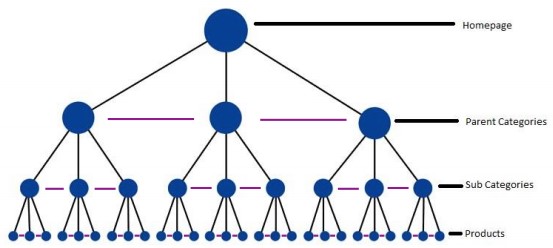
Then you should have educational content linking everything together (blog, resource center, etc.). Make sure (before you get too deep into the project) that you understand things from the view of the forest before you get into the weeds!
Do the URL’s & Menu make sense for the architecture?
You want your URL’s to follow the architecture you’ve defined. Below is an example of a recent client who sold cake decorating products:

After doing some research, we found that most people aren’t searching “cutters” or “pans”, they’re searching by the food they’re baking – “cake cutters”, “cupcake pans”, etc. So the menu prior didn’t really make sense, and instead we organized the menu by food as pictured above. The URL’s became MUCH easier to understand & digest quickly, not to mention they also hit on these keywords more effectively.
The ultimate goal is for the customer to know exactly where they are by glancing at the URL, while also having that URL contain the targeted keywords & capture the theme of that page.
Does each page have a unique intent?
You do not need a “custom jackets” page and a “customized jackets” page and haven’t for a long time. Google is smart enough to understand the theme of the page, and in fact more related content that shows you’re an expert on the subject the more likely you are to rank well. For example, if I were building a “custom jackets” page I would include the words zipper, embroidered, printed, sizing, etc.
It becomes more difficult when trying to determine what unique intent really is, so I encourage you to put yourself into the mind of the customer. Here’s 3 examples, try to determine which ones should have separate pages:
- Example 1: someone searching for “running shoes” and someone searching for “nike running shoes”
- Example 2: someone searching for “custom jackets” and someone searching for “personalized jackets”
- Example 3: someone searching for “running shoes” and someone searching for “running shoes on sale”
Example 1 should NOT be combined and instead have separate pages on your website. One person is looking for any type of shoe, the second person is looking specifically for Nike. On the running shoes page, you should have a variety of products, educational content about how your shoes are the best for running, etc. On the nike running shoes page, you should have only the Nike shoes, educational content about how Nike shoes are built / what makes them unique, how your prices for Nike shoes are competitive, etc.
Example 2 SHOULD be combined on the same page. Both customers are just looking for the same thing. An argument can be made that someone searching “personalized” is more likely to be a “one off” smaller order customer, but at the end of the day you’ll rank better for both if they’re together because they really mean the same thing.
Example 3 SHOULD also be combined and where we start to get into a gray area. When in a gray area, here at Digital Position we lean toward combining. Both of these customers are looking for the same thing (running shoes), but one is more price conscious. If there’s volume for both terms (big IF and something that should be looked into), then on your combined landing page you might want to incorporate a “sale running shoes” section. Problem solved!
When you’re planning your new website, we want to make sure every page has a purpose. A great keyword map can really help with this understanding and is something your SEO team can put together!
Have you drastically changed the page layout?
Especially on mobile devices, has the page layout changed drastically? Was there a ton of content at the top of the page that got moved all the way to the bottom? Were there headings that existed before that are gone now? Were images or other content removed?
Most of the time it’s alright if you shift things around, that’s expected with a refresh. However, just make sure you pass those changes by your SEO or the mockups for review!
Are the internal links similar before & after?
The most common issue we see here is important pages being taken out of the menu in an attempt to make the navigation more simple. It would be better to incorporate those links in the menu, get past the launch and settle down any volatility and THEN test removing the links and gauging the impact on SEO.
Otherwise, we also sometimes see content carried over without all the links being put back in place. For example, if a blog post had 5 links to other pages on your website but gets ported over without those links, the pages those links were pointing to may lose rank!
On-Page Optimization
Now that we’ve got the foundation in place, let’s focus on the “SEO basics” to go along with that foundation before we get technical. Pretty light here when referring to a migration.
Does every page have a properly targeted Meta Title?
If each page has a unique intent (in architecture section), the Meta Title on each page needs to be engaging & include the targeted keywords. Meta Titles across the board should also contain your brand name and a trademark or reserved symbol if applicable!
Were the header tags carried over?
H1’s particularly should include the primary keyword or theme of the page. We want to make sure those got carried over to the new effort.
Were the meta descriptions carried over?
Not a high priority for performance, meta descriptions only influence clickthrough rate (CTR) and don’t directly impact rankings BUT when doing a migration we want to eliminate as many variables as we can so when we see performance jumping around we can react more quickly.
Technical SEO
Are all of your 301 redirects in place & functioning properly with no redirect chains?
This is arguably the most important part of the migration. If you don’t tell Google where the new versions of the pages exist……….no authority will be carried over. You’ll lose 50-60-70% of your website traffic.
We’ll typically create a big redirect file for you that can be imported by the developer. Then, we’ll crawl the OLD website to ensure all of the redirects are functioning properly and returning the 301 status code.
On top of this, we’ll look for redirect chains and cut those out as well. A redirect chain is when a redirect points to another redirect, creating a chain of redirects in a row. This is just best practice cleanup to ensure every redirect goes to it’s final destination.
Is your robots.txt file set up properly?
Let’s make sure you haven’t blocked your entire domain from search engines 😉 (yes, we’ve actually seen people do this by accident). The bigger fear though is that the client misunderstands when to use robots.txt vs a noindex directive. What we want to avoid is this:

In the above example, a search engine crawler can’t get from Page A to Page C because Page B is blocking the crawler. We want to reserve blocking via robots.txt for back end systems like an account system that is blocked behind a login. Pages that are publicly accessible by a user should be publicly accessible by a search engine bot – if you don’t want them indexed, use the noindex directive (below).
For more information on robots.txt, Moz has a perfect article about it. This article goes over the basic set-up & configuration.
Is a canonical on every page?
Every page should contain a canonical even if it’s pointing at itself. This eliminates duplicate content issues and tells search engines what the “master” version of the page is. See below:

Are Noindex, Follow tags set up properly?
If you don’t want a page indexed, implement the noindex, follow tag. For the same reason why we don’t block things via robots.txt above, we don’t want the nofollow being used unless we actually don’t want links on the page to be followed. This should have an SEO professional involved since there are many directives. I’ll list them below along with the basic code:
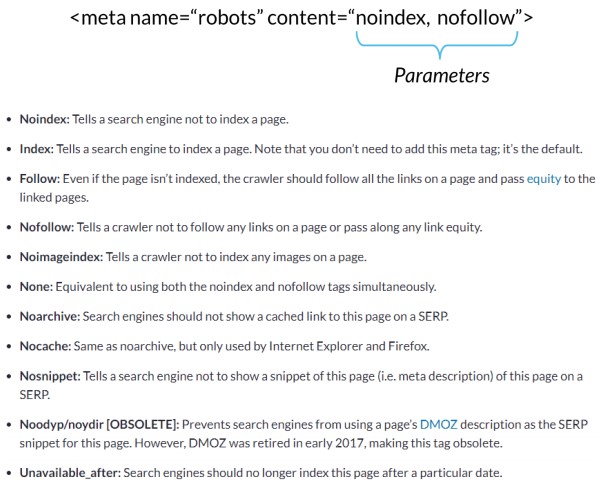
Have you created an on-site and XML sitemap?
Both sitemaps are best practice, although the XML sitemap is more important since we can submit that directly to Google & Bing. Sitemaps help search engines find and index all your great content, so during a migration it’s important to submit these so it doesn’t take a long time for you to get these new pages indexed & ranking.
Have you communicated to Google Search Console & Bing Webmasters?
Have you placed the verification code and set up these 2 platforms for the new website domain? You should do the following:
- Communicate within these platforms that you’re moving your website address (on the old domains).
- Crawl a bunch of pages to check to make sure nothing is blocked.
- Check for security issues.
- Submit the new domain to the index once you’re ready.
- Submit your XML sitemaps.
- Check for any other issues (Core Web Vitals, Mobile Usability, etc.)
It’s great if you’ve got communication directly from Google & Bing on what needs to be addressed! Once things are crawled on the new domain, let’s clear up anything that stands out in these tools.
Have you set up your Schema / Structured data properly?
It could hurt performance if you had star reviews on your old website and lose them now because you forgot to configure them. Make sure reviews are carried over if possible and that everything is marked up properly.
Are your Page Speed scores at LEAST the same or better than before (especially on mobile)?
Page speed is vital, and if you’re building a new website now is the time to build a blazing fast foundation since you can work from the ground up without disrupting your old website until you’re ready to launch.
Have your SEO team run page speed tools on the new staging website once it’s ready to go live. We want to check:
- Time to first byte
- How long to render pages
- Fully loaded time
We also want to make sure the website is responsive and adapts to mobile well without removing content.
This includes optimizing images on the new website which tends to be the most common issue we see with page speed. See below:

Steve (my partner, middle) won’t be happy that I posted this photo
Optimize those images on the new website and let’s make sure it’s really snappy. A nice improvement in speed could help rankings improve!
Is the new website secure?
Is the new website on HTTPS? Last thing a customer wants to see when visiting a website is this:

Let’s also make sure there are no critical dependencies. Critical dependencies exist when your website is dependent on an external resource that isn’t hosted on your website. If that other website takes that resource down, your website could break!
Keyword Research & Content
Was ALL content carried over?
This is the first question here for a reason. If we again boil down a migration, porting all content over to the new website is crucial. If you had a “nike running shoes” page on the old website that was driving traffic and you don’t have one on the new website, that’s a problem and you can expect to lose traffic.
We can assist here in seeing which pages are driving traffic & revenue so you know which ones you can safely get rid of and not. Then we can go through that list together and check the new website to ensure all the content has been ported over properly.
Another problem we see all the time is when a client launches the new website with the same intent pages, but cut out sections of content. For example, if there were 3 paragraphs of text and now there’s none even though there’s still a “nike running shoes” page that exists. This is a big no-no for an SEO migration.
What we try to tell clients is to provide the best experience for the user. What’s better, you land on a category and see a selection of products – and if you don’t find what you’re looking for you’re shit out of luck? OR, after the product selection you see educational content that might help influence your decision, social proof reinforcing that you’re in the right place, etc.? It’s not only a better experience for the user AND it’s better for SEO. We’re typically alright with deprioritizing the educational content on the page (to an extent), just don’t cut out portions of content when you do your refresh or migration!
Is there any duplicate or cannibalized content on the new effort?
We don’t see this get better or worse typically with a migration, but we have seen it happen. For example, we’ve had a client who had category pages with 50 products on the page but when they moved to the new website they have 25 products per page and ended up with 2 pages for that same category. They didn’t have a canonical in place and they weren’t using the rel=”next” and rel=”prev” markup to the links when going from page to page. Thus, the second page actually got indexed and created a slight duplicate content issue.
Just do a sanity check for these types of things to see if the new website provides any road bumps on how things are configured. Another common slight issue is that Shopify autogenerates “tagged” pages when you tag your products, and we don’t want those competing with your primary category pages!
Is your new 404 page set up & customized?
We want to make sure during this delicate process of migrating from old to new that IF someone stumbles upon a broken link or some fringe broken page, that they get a good experience on the 404 page that guides them on where to go. A little humor or brand voice on the 404 page doesn’t hurt either, try not to have it be so dry.
External Brand & Link Building
Are ALL social profile links switched over?
Make sure all your information on all of your social channels is swapped over when you launch. Here are some of the platforms (not an exhaustive list, varies by client):
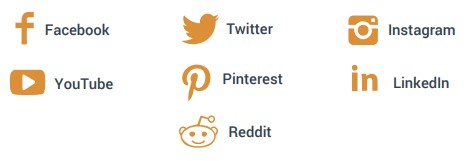
Are external links switched over where it is easy to do so?
Wherever possible, if we can get external links updated to the new website URL that would be great. It’s not necessary to get everything with a fine tooth comb here, just change what you’re able to get changed quickly & easily.
Have you announced the change on your social media profiles and elsewhere?
Tell your customers what’s happening! Don’t forget to send out an e-mail to your customer list, announce it on social media, etc. If you’re going to do a pop-up on the website, make sure it’s not intrusive to the customer experience. Our SEO team can help you keep things within a range that makes sure you don’t end up with a penalty for it. Avoid multiple flyouts and competing pop-ups, customers hate them but sometimes short-term they can help brace the customer if the changes are drastic.
We don’t want existing customers who are used to browsing your website a certain way to be completely off guard if we can help it.
Is your Google Business & Bing Places information up to date?
Very important that we get all of your information in alignment wherever possible for SEO. Google Business & Bing Places information should be updated.
Any other external locations where information should be updated?
Do you have a yelp profile, a local listings account with Moz Local, a Glassdoor profile, or any other platforms you can think of that need to be updated? Give it a good think!
Have all of your PPC ads been updated with the new URL’s?
301 redirects can lead to disapprovals in your paid ads strategy. Have all of your advertising efforts across search, display, video, social, etc. been updated?
POST-LAUNCH
So you launched your new effort, ready to kick your legs up and watch the revenue fly in? Not quite.
No launch goes perfectly. In my 15 years of experience overseeing probably over 100 website launches, there’s always something that needs to get addressed post-launch.
The key areas to keep an eye on are:

- Monitor your analytics & rankings
- Monitor your website conversion rate
- Monitor your indexed page count
- Make sure all the new content is getting indexed, sometimes you may find thousands of ADDITIONAL pages are indexed you didn’t realize existed too. Clean them up if it happens.
- Check for 404’s & crawl the website again
- Crawl the old URL’s to ensure redirects are functioning properly (mentioned above in technical SEO section)
- Monitor your PPC ad performance and especially Google Ads quality scores
- Annotate the launch date in all your advertising platforms
- So you can easily see before/after in all charts you’re looking at
Once you’ve worked out all of the kinks with the launch and results have stabilized, you can start executing on a clean business scaling strategy! That’s where the fun starts – build kickass content, scale those PPC efforts, and grow this thing with your agency partners!
If you have any questions or would like to understand more about how our process makes this simpler for you, request a proposal and we’ll get in touch to see how we can help!


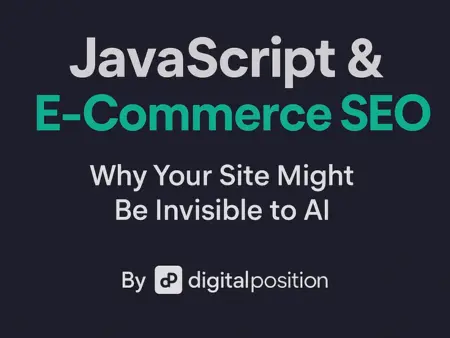
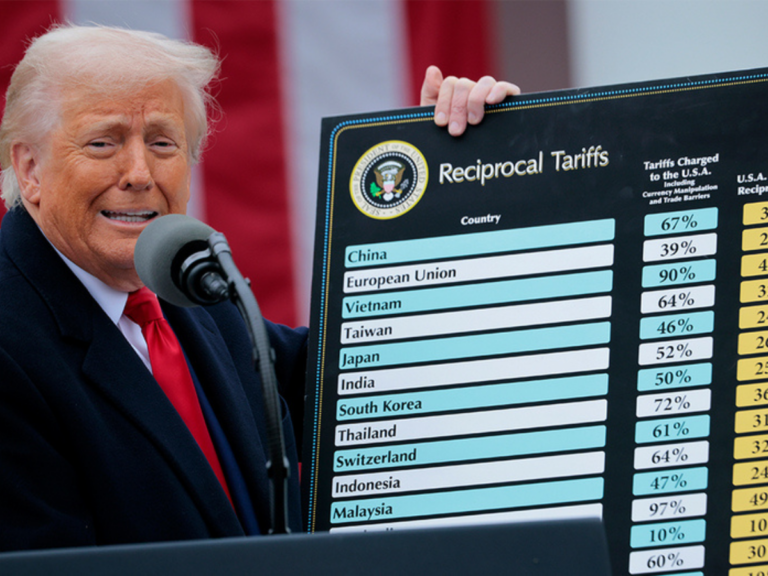
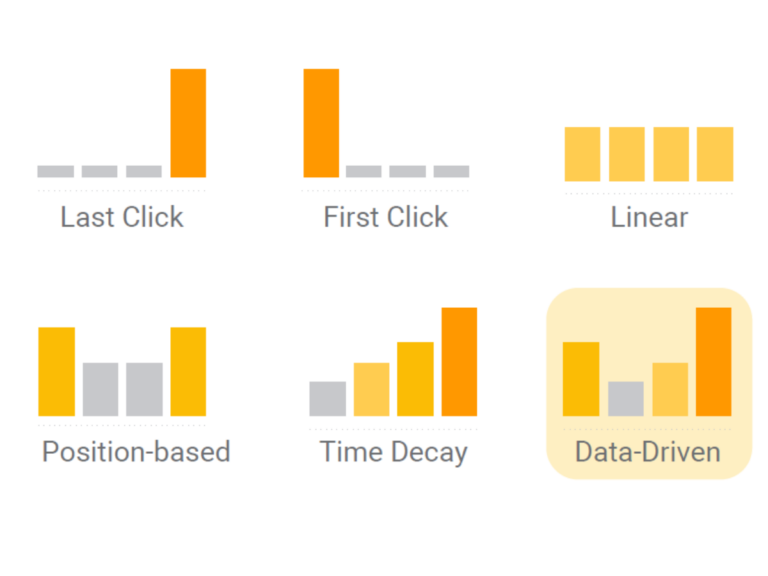
no replies